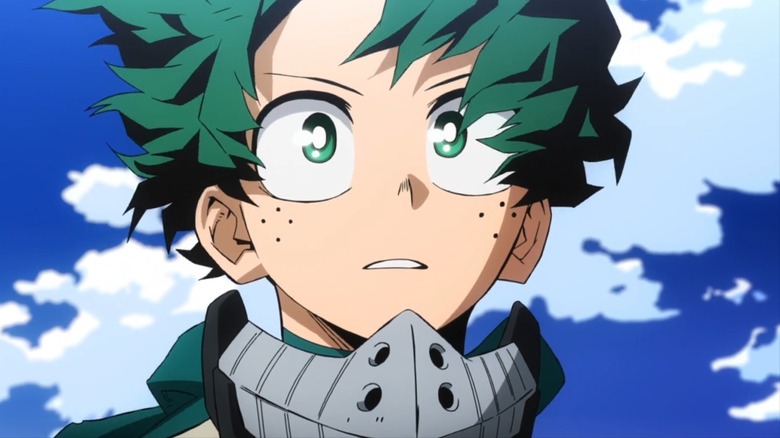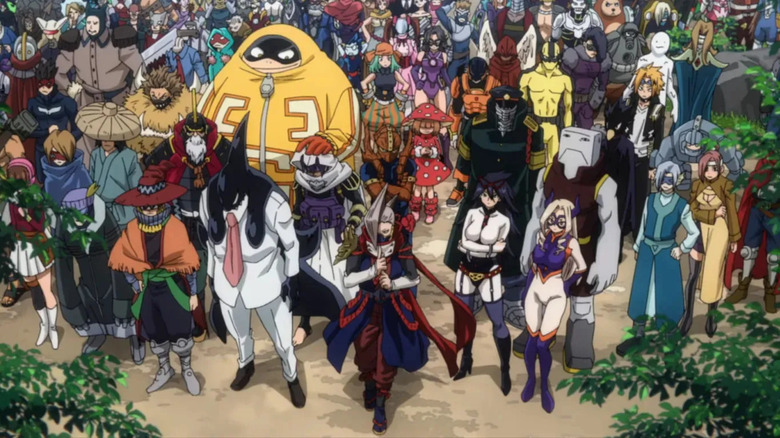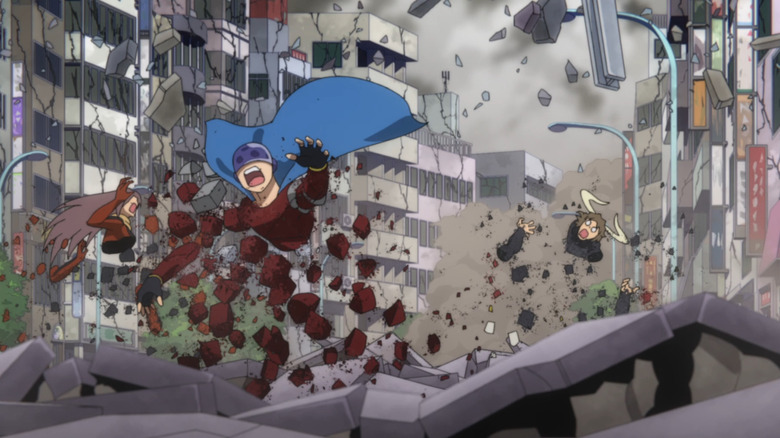
Superhero stories are saturating the market, there is no denying it. While this is mostly an American thing, it also impacts Japan, where one of the biggest manga and anime franchises today centers around superheroes: "My Hero Academia." The show is essentially "Sky High" the anime, as it takes place in a world of superheroes and focuses on a group of young students at an academy for future heroes. From the onset, "My Hero Academia" stands out because it doesn't make powers special but commonplace, with 80% of the global population having some sort of "quirk" or power (some mundane and useless, some powerful and deadly). Here, a hero is not an outlaw, but a profession you need to study for, a police force-like government-sanctioned organization with rules and limitations.
While the show is generally very entertaining, it sometimes suffers from being a bit repetitive in its following of classic shōnen tropes, as it spends most of its runtime on school stuff — exams, tournaments, festivals, etc. But what makes "My Hero Academia" special and worth watching is the way it crosses its school stories with the adult world of heroes and villains, as we see with a plot thread that involves the rise of a villainous organization.
Now, after five seasons, the sixth season of "My Hero Academia" is finally unleashing chaos and embracing its American comic book influences by giving us the anime version of "Avengers: Endgame" we've been waiting for. This is the first season in years that has felt like a must-watch event. It's a season about an all-out war full of stakes and danger -- one where heroes die, heroes rise up, and students put their lessons to practice.
All-Out Hero War

It's been a long road to this point, with the thread of the League of Villains and the artificially made Nomus starting all the way back in episode 8 of the anime's first season. It would have been easy to simply forget about them and introduce new and better villains — though we have gotten new and stronger villains with every new story arc — but "My Hero Academia" smartly kept going back to Shigaraki, the young would-be villain and his gang of misfits, murderers and friends, and the mystery of the Nomus. The show has continuously added to this mythology, tying it to the story of its world's greatest hero, All Might, and his biggest enemy, All For One.
This culminated last season, with Shigaraki forming and leading the Paranormal Liberation Front, a group of super-powered individuals looking to break the hero system and make a society where those with the strongest powers are in charge. An attack on hero society has been a long time coming, especially since the show introduced Stan: the vigilante Hero Killer who fought to unmask the hypocrisy of heroes becoming fixated on sponsorships and money rather than doing their job.
In many ways, the sixth season of "My Hero Academia" feels like the culmination of years' worth of stories, bringing to a head the collision course of Shigaraki Tomura and his army of villains, and the heroes who have been preparing for the return of organized villains for a while. When the season begins, the heroes are preparing for an assault on the villains' headquarters, and it feels like the portal scene in "Avengers: Endgame," with every single hero we've ever met on the show, and a bunch we hadn't met before, all prepared to fight.
Heroes Will Live, Heroes Will Die, And Nothing Will Ever Be The Same

"My Hero Academia" has given us moments of tension, and moments of danger before, but it always felt somewhat sanitized and contained until now. It's not just that we're seeing a lot of deaths, though there are a number of those, and gruesome ones at that. It's that the sixth season is taking the story to its natural boiling point. We have seen our young students grow and learn, we've seen them face real horrors and work with real heroes, so it feels earned that the students of U.A. High School are now fighting alongside the adult heroes.
Still, they are kids, and watching a group of kids on the front lines with seasoned heroes, facing down against an army of villains willing to not just kill but annihilate anyone that stands against them, feels both important dangerous. In the first few episodes of the season, we see hordes of heroes dying by disintegration due to Shigaraki's powers, and we see a hero outright assassinate a villain. This story arc feels like the end of one version of "My Hero Academia" -- where the heroes are excited about their future, where the fights end before they get serious, where the villains go to jail and the heroes save the day. This is the beginning of the version of "My Hero Academia" where heroes die, where villains go free, and where you realize you can't save everyone. But nothing feels out of place or rushed, because this is where the story has been leading all along.
"My Hero Academia" has always been about training young heroes to one day go out into the world and face the bad guys, and we've reached that stage. We're in an endgame where people can actually die where choices matter and have consequences that will impact the story going forward, where it's hard to know what happens next. It is the best the anime has been in years, and this is only the start.
Read this next: 14 Anime Shows To Watch If You Love My Hero Academia
The post My Hero Academia Is Back to Being a Must-Watch Anime With Its Own Take on Avengers: Endgame appeared first on /Film.
0 Comments